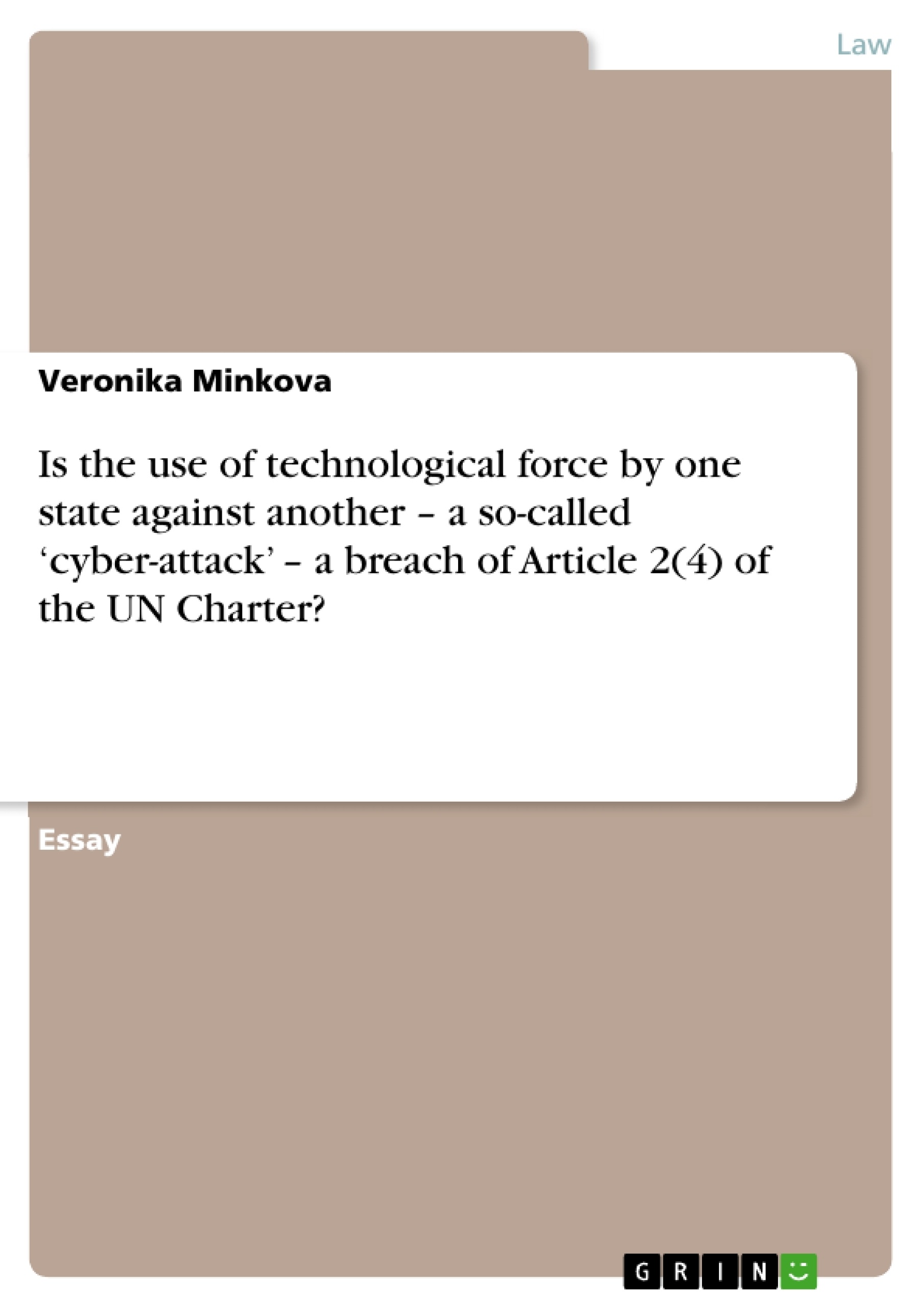Computers represent a stark example of dual use technology as they can be used for peaceful and military purposes, such as espionage and cyber-attacks. Cyber-attacks are a new tool of coercion, which brings many advantages for potential perpetrators in comparison with conventional attacks. For example, the knowledge and equipment necessary to initiate a computer network attack are widely available. The response of international law to this problem has been slow, attempting to twist existing legal frameworks to fit the new challenge. The present essay considers whether the international community should view computerized network attacks as a prohibited use of force under Article 2(4) of the UN Charter. The first section defines the parameters of cyber-attack and distinguishes it from other forms of computer crime. Several reasons for choosing cyber-attack over conventional weapons are identified. The second section discusses whether cyber-attack constitutes ‘armed force’. Cyber-attack is contrasted with other forms of coercion such as political and economic coercion as well as chemical and biological weapons. The final section poses the question whether cyber-attacks are prohibited by Article 2(4) of the UN Charter, particularly focusing on the issue of consequentiality.
Inhaltsverzeichnis (Table of Contents)
- Introduction
- The parameters of cyber-attack
- Cyber-attack as a use of force
Zielsetzung und Themenschwerpunkte (Objectives and Key Themes)
This essay examines the question of whether the international community should view computerized network attacks as a prohibited use of force under Article 2(4) of the UN Charter. It explores the nature of cyber-attacks, comparing them to other forms of coercion and weaponized force, and analyzes whether they fulfill the criteria for violating Article 2(4).
- Defining the scope and characteristics of cyber-attacks
- Evaluating cyber-attacks in relation to traditional notions of armed force
- Analyzing the potential for cyber-attacks to constitute a prohibited use of force under Article 2(4)
- Assessing the consequential impacts of cyber-attacks and their potential for destruction
- Examining the legal framework for cyber-attacks and the challenges of attribution and responsibility.
Zusammenfassung der Kapitel (Chapter Summaries)
- The first chapter introduces the concept of cyber-attacks, highlighting their potential for devastating effects on critical infrastructure and national security. It distinguishes cyber-attacks from other forms of cyber-crime and identifies their unique advantages, including anonymity, affordability, and the potential to inflict damage without physical destruction.
- The second chapter delves into the legal implications of cyber-attacks in relation to Article 2(4) of the UN Charter. It examines the debate surrounding the definition of "force" within the context of international law, analyzing whether the term encompasses only armed force or also includes forms of coercion.
Schlüsselwörter (Keywords)
Cyber-attack, Article 2(4), UN Charter, use of force, armed force, coercion, international law, information warfare, critical national infrastructure, attribution problem, consequential impact, economic coercion.
- Quote paper
- Veronika Minkova (Author), 2011, Is the use of technological force by one state against another – a so-called ‘cyber-attack’ – a breach of Article 2(4) of the UN Charter? , Munich, GRIN Verlag, https://www.grin.com/document/179303



